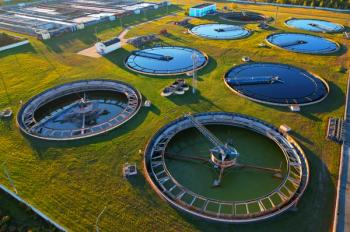
"Greener" HPLC
A team of Spanish scientists has discovered an eco-friendly method for performing HPLC separations using cyclodextrins as mobile phase additives. We spoke to Víctor González-Ruiz, Andrés G. León, Ana I. Olives, M. Antonia Martín and J. Carlos Menéndez from the University of Complutense, Madrid, Spain to find out more.
A team of Spanish scientists has discovered an eco-friendly method for performing HPLC separations using cyclodextrins as mobile phase additives. We spoke to Víctor González-Ruiz, Andrés G. León, Ana I. Olives, M. Antonia Martín and J. Carlos Menéndez from the University of Complutense, Madrid, Spain to find out more.
Can you explain how the use of cyclodextrins as mobile phase additives leads to “greener” separations?
Cyclodextrins are captivating molecules that constitute a keystone in supramolecular chemistry. These natural products consist of macrocycles made from 6, 7 or 8 glucose units. They are produced inexpensively from starch, a renewable natural material. Cyclodextrins are water soluble and miscible with the organic solvents (methanol or acetonitrile) commonly employed in HPLC. The formation of analyte-cyclodextrin inclusion complexes modifies the chromatographic behaviour of the analytes, reducing the retention time while maintaining good efficiency and selectivity. Cyclodextrins lead to greener HPLC separations by allowing higher water proportions to be used and replacing acetonitrile by renewable alcoholic solvents (methanol and ethanol) as organic component in the mobile phases.
Are there any other benefits to using them?
The presence of cyclodextrins, at adequate concentrations, as mobile phase additives in liquid chromatography enhances the efficiency of the separations due to the reduction of the retention times. Besides, cylodextrins increase the selectivity factors of analytes and, due to their chiral nature, they normally present higher affinity towards one particular enantiomer when forming the complexes, leading to chiral recognition of the analytes and allowing the chromatographic separation of enantiomers.
Can they be used in all separation techniques?
Yes, many techniques may take advantage of molecular recognition by cyclodextrins as they enhance the separation of closely related compounds such as structural and geometrical isomers using different separation driving forces. Application of cyclodextrins in analytical separation techniques has dramatically increased during the last decade. The use of cyclodextrins is growing not only in chromatography but also in capillary electrophoresis. Cyclodextrins have been successfully employed as stationary phases to solve analytical problems in gas chromatography (GC) and supercritical fluid chromatography (SFC). In the case of liquid chromatography (HPLC), cyclodextrins have been traditionally employed as stationary phases, but, as we have shown, they are also very useful as mobile phase additives. In the case of capillary electrophoresis, the introduction of charged cyclodextrins in the running buffers facilitates the separation and resolution of neutral analytes. Native cyclodextrins are profusely employed for solving complex racemic mixtures by capillary electrophoresis.
What are the main drawbacks or challenges of using cyclodextrins as mobile phase additives?
The main drawbacks of the use of cyclodextrins in HPLC are derived from the adsorption of cyclodextrins on the most hydrophobic stationary phases (C18). This is particularly problematic for methylated cyclodextrins which, on the other hand, provide better separations than the native compounds. Elution of methylcyclodextrins requires a high proportion of organic solvents in the mobile phase and an appropriate equilibration of the column. The challenge that we accepted when we started our work in this field was to alleviate this handicap by the use of less hydrophobic stationary phases (C1). We have obtained satisfactory results in terms of green separation, efficiency and time of analysis and reducing the adsorption of cyclodextrins on this alternative stationary phase [V. González-Ruiz et al., Anal. Bioanal. Chem., 400, 395–401 (2011)]. Another goal that we are planning to address in the future will be the use of two kinds of cyclodextrins in the mobile phases, in order to obtain a decrease in the analysis time accompanied by an enhancement of the selectivity of the separations and also a high proportion of water in the mobile phases.
In your experiment, where did you find inclusion complexes to be more stable and why was this result important?
The inclusion of analytes into the cyclodextrin cavities requires steric compatibility together with favourable hydrophobic, van der Waals and hydrogen-bonding host-guest interactions. The affinity of the analytes for the cyclodextrin cavities must be higher than for other components of the mobile phases (organic solvents). Valuable information concerning the stability constants of the complexes can be obtained by HPLC with cyclodextrins as mobile phase additives. Inclusion complexes were more stable in ethanol–water mixtures than in methanol, and complexes with hydroxypropyl-beta-CD were more stable than those with beta-CD for the ethanolic mobile phases, which is an important result in terms of the use of ethanol as a real alternative to more toxic solvents in the design of greener mobile phases. The stability of the complexes increases their solubility in the mobile phase and reduces the residence time on the stationary phase. We were aided in these studies by the very detailed structural information derived from 1H-NMR, 13C-NMR and 2D-ROESY experiments, which allowed us to propose modes of analyte inclusion that are well correlated with the changes in the retention factors and the association constants determined by HPLC. This correlation between NMR data and chromatographic behaviour constitutes another innovative aspect of our work [V. González-Ruiz et al., Green. Chem., 13, 115–126 (2011)].
What conclusions did you reach?
The main novelty in our work is the development of an RP-HPLC method that allows a considerable increase in the proportion of water in the mobile phase together with with a good chromatographic resolution. We have found that cyclodextrins are more efficient in this regard than other types of organic solvent modifiers. The presence of cyclodextrins in the mobile phases allows the traditional HPLC technique to become an attractive eco-separation technique using conventional stationary phases and inexpensive columns and under simple and user-friendly experimental conditions. The proposed methodologies are aimed at achieving a significant reduction or organic waste from HPLC, which is by far the most popular analytical technique in the analytical laboratories of pharmaceutical industries worldwide.
Newsletter
Join the global community of analytical scientists who trust LCGC for insights on the latest techniques, trends, and expert solutions in chromatography.





